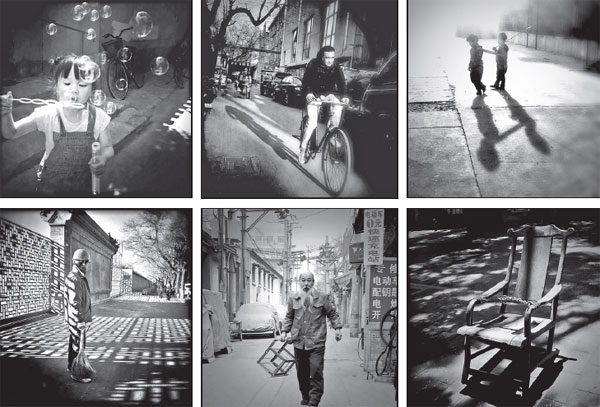Life in a hutong
By Deng Zhangyu (China Daily) Updated: 2017-06-19 07:03A foreign documentary filmmaker unveils her book of photos of a Beijing alley - all taken by cellphone. Deng Zhangyu reports.
Over the past five years, Tan Siok Siok has been recording the lives of people in a Beijing hutong (alley) on her cellphone and sharing the photos on social media.
In her images from the old-style alleyways, chairs and bicycles, sleepy people and those with earmuffs are commonly seen.
In May, the documentary filmmaker from Singapore, who now runs a video company in Beijing, released her book People in Beijing that has photos taken by her only on her phone. It records the daily lives of the residents of a hutong area and, in particular, sheds light on details that are common but often ignored by others.
"Each of my photos is an independent story in Beijing. You can say it's a story of Beijing but also a story of the world," says Tan, 45.
She says that the expressions on people's faces in her pictures - anxiety, dismay and happiness - can be found among the residents of any city.
Tan used a smartphone to take the photos so she could quickly share them online.
"Many of my followers (on social media) are surprised (to know) that all the photos were taken in the same hutong," she says, adding that some thought she had visited different alleyways in the city.
Tan took the black-and-white images through the different seasons as well as the changes in natural light in the Fangjia hutong, which is located near tourist spots such as the Lama Temple and the Imperial College.
Over the past five years, she has visited this alleyway that is close to her office to click the pictures, almost daily.
"You can say they were taken recently or dozens of years ago," Tan says of the color treatment.
One of Tan's friends, who moved to New Zealand two years ago, has since put up several of Tan's hutong photos on the walls of her home as a way to recall her days in Beijing.
When she came to Beijing in 2010 from Singapore, Tan was interested in everything a hutong had to offer to newcomers, especially foreigners: bikes lying on the ground locked with a chain and empty chairs to dissuade people from parking vehicles outside houses in the crammed lanes.
But even after more than 1,000 days of work in the hutong, her passion did not fade as she tried to capture daily life from different angles.
One winter morning, she noticed an old man riding a three-wheeled vehicle very slowly, with his wife sitting behind him.
Tan followed the couple for a while to discover that they were taking a sightseeing tour of the hutong. The wife was unable to move due to her poor health condition, so her husband was showing her around the city.
"People in the hutong are optimistic and that touched my heart," Tan says.
She says Beijing is a city where the country's rapid changes are clearly visible, and in some ways, the same is true of the city's old alleyways.
Tan once saw the owners of shops enjoying tea in front of their outlets in Fangjia, but found that the shops had been demolished the following day.
For her, taking photos is a way to ease pressure from work.
She is good at capturing people's expressions without them noticing her, a skill she gained from her years as a documentary filmmaker.
Before arriving in Beijing in 2010, Tan worked for the Discovery TV channel on many documentary films in Singapore.
Tan likes to focus on people stories, she says. That's why her hutong project was on them.
Bao Jihong, a longtime friend of Tan, says: "Tan's photos show us a Beijing that we are familiar with but largely ignore."
Tan's next project is to shoot a series of photos on Chinese women from different generations, with which she hopes to tell the story of how they view a rapidly changing society.
Contact the writer at dengzhangyu@chinadaily.com.cn
|
Tan Siok Siok's black-and-white photos reveal a touching and lively side of daily lives in Beijing's hutong area. Photos Provided To China Daily |
- 'Cooperation is complementary'
- Worldwide manhunt nets 50th fugitive
- China-Japan meet seeks cooperation
- Agency ensuring natural gas supply
- Global manhunt sees China catch its 50th fugitive
- Call for 'Red Boat Spirit' a noble goal, official says
- China 'open to world' of foreign talent
- Free trade studies agreed on as Li meets with Canadian PM Trudeau
- Emojis on austerity rules from top anti-graft authority go viral
- Xi: All aboard internet express












